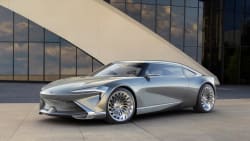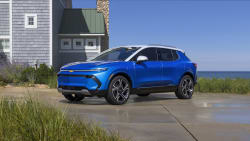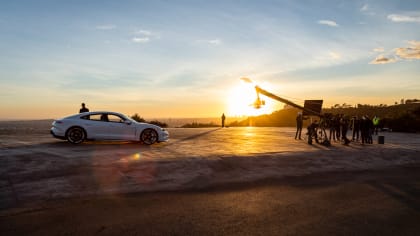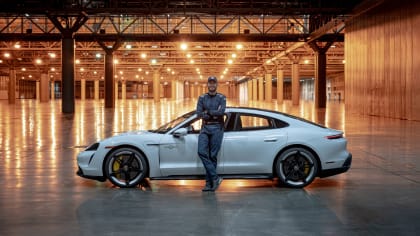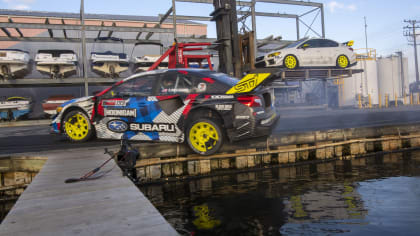The Case For The Toyota Mirai
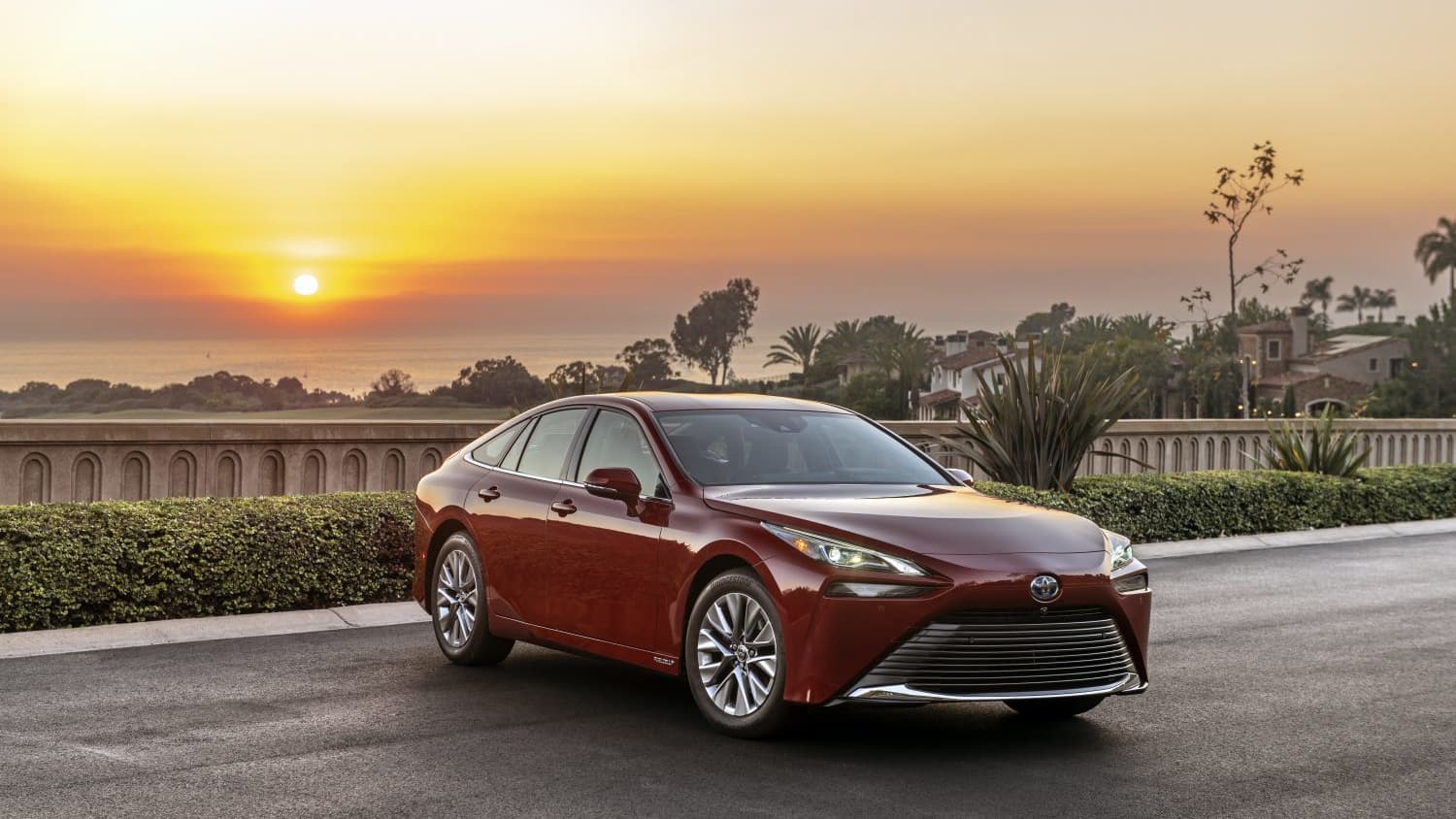
Review Of The Toyota Mirai
We review the 2022 Toyota Mirai fuel cell vehicle, and getting one may not be as crazy as it seems.
By Roy Nakano & Doug Stokes
Mon, Dec 27, 2021 05:05 PM PST
What if you planned the perfect party, and nobody came? It’s a familiar theme from the TV show Frazier. In the sitcom, variations of that theme included intervening events, like an unexpected food shortage, malfunctioning equipment, or someone else throwing a party at the same time and the guests all went there instead.
We can’t help but think Toyota must feel like Frazier Crane with all that’s gone into the Mirai and the effort they put into bringing fuel cell technology to fruition. Fuel cells were suppose to be the next big thing in automotive sustainability, but the infrastructure ramp-up has been slow. Moreover, there’s been reports of drivers going to fuel cell stations, only to greeted by signs indicating, “sorry, the supply has run short” or finding that the pump is not operating. To add insult to injury, Toyota’s target customers for the Mirai have largely gone to Elon Musk’s party down the street at the Tesla store.
Toyota is not alone in this predicament. Honda and Hyundai are also major proponents of fuel cell vehicles. But with the new Mirai, Toyota has arguably advanced the cause further than all the rest.
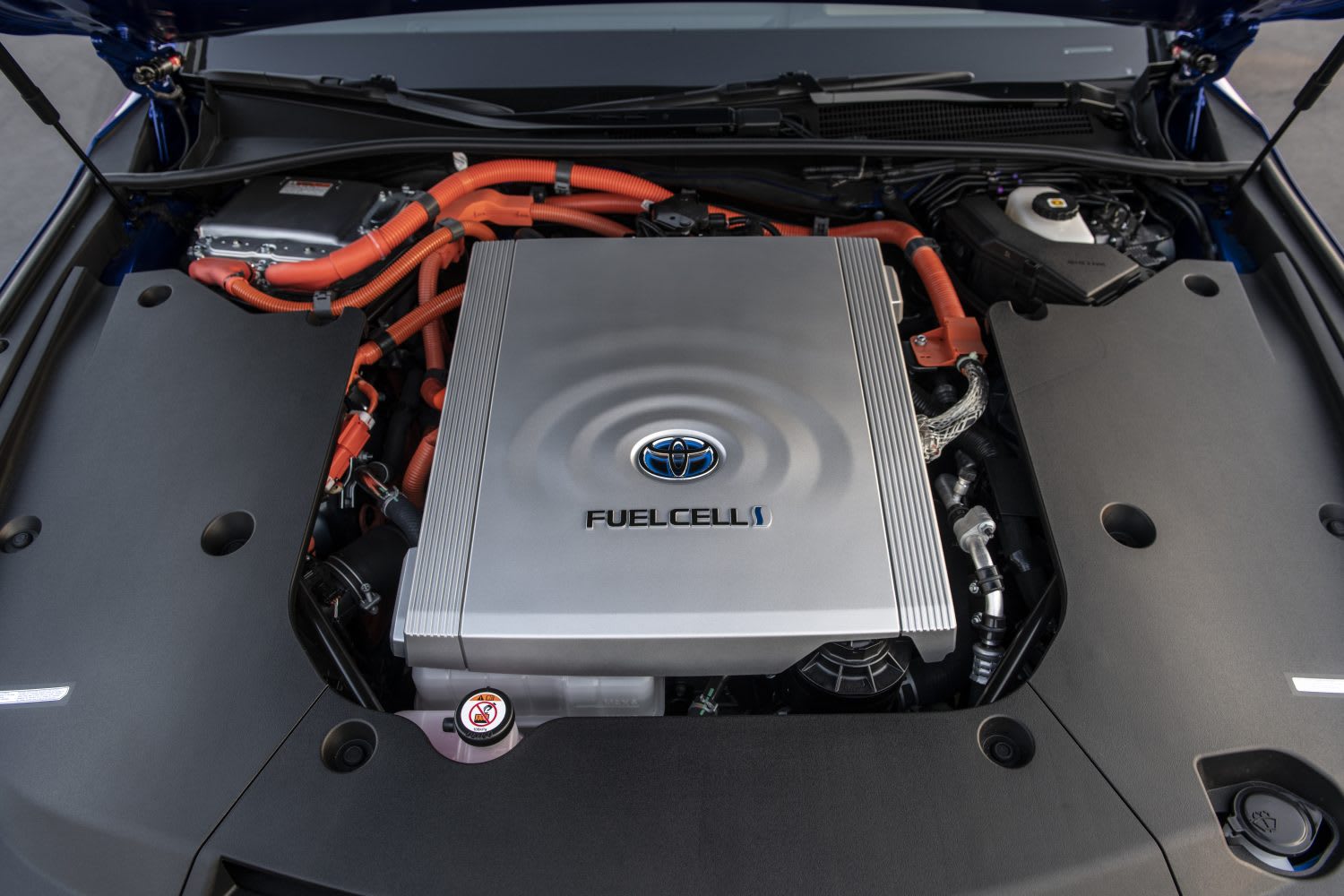
Why Fuel Cell Technology?
Early on, Toyota was convinced the road to sustainability was through electric vehicles propelled by current generated from fuel cells. Conventional electric vehicles rely on batteries that take time to charge up. With fuel cells, manufacturers envisioned hydrogen stations where drivers can “gas up” just like in the typical service station. The hydrogen fuel would combine with oxygen in electrolytic cells to produce a clean electrical charge—the only by-product being water. Thus, fuel cell technology promises the best of both worlds—the clean, refined and responsive properties of electric vehicles and the convenience of filling up your charge at a fuel station. It’s no wonder many car manufacturers were drawn to it.
Government Intervention
Even the state of California was convinced of the worthiness of fuel cell technology. So much so that in 1995 three government agencies—the California Air Resources Board, the California Energy Commission and the South Coast Air Quality Management District (also known as the AQMD) joined in with six companies from the private sector—Ballard Power Systems, BP, ChevronTexaco, DaimlerChrysler (now Daimler), Ford Motor Company and Shell Hydrogen. Together, they formed the California Fuel Cell Partnership (CaFCP). Today, the CaFCP includes 11 automotive manufacturers and six government agencies as full members, as well as 11 associate members from the public and private sectors. CaFCP has a singular mission—to promote hydrogen fuel cells as a zero emission technology that would rid the air of toxins, smog-generating pollutants, and global gas pollutants such as carbon dioxide.
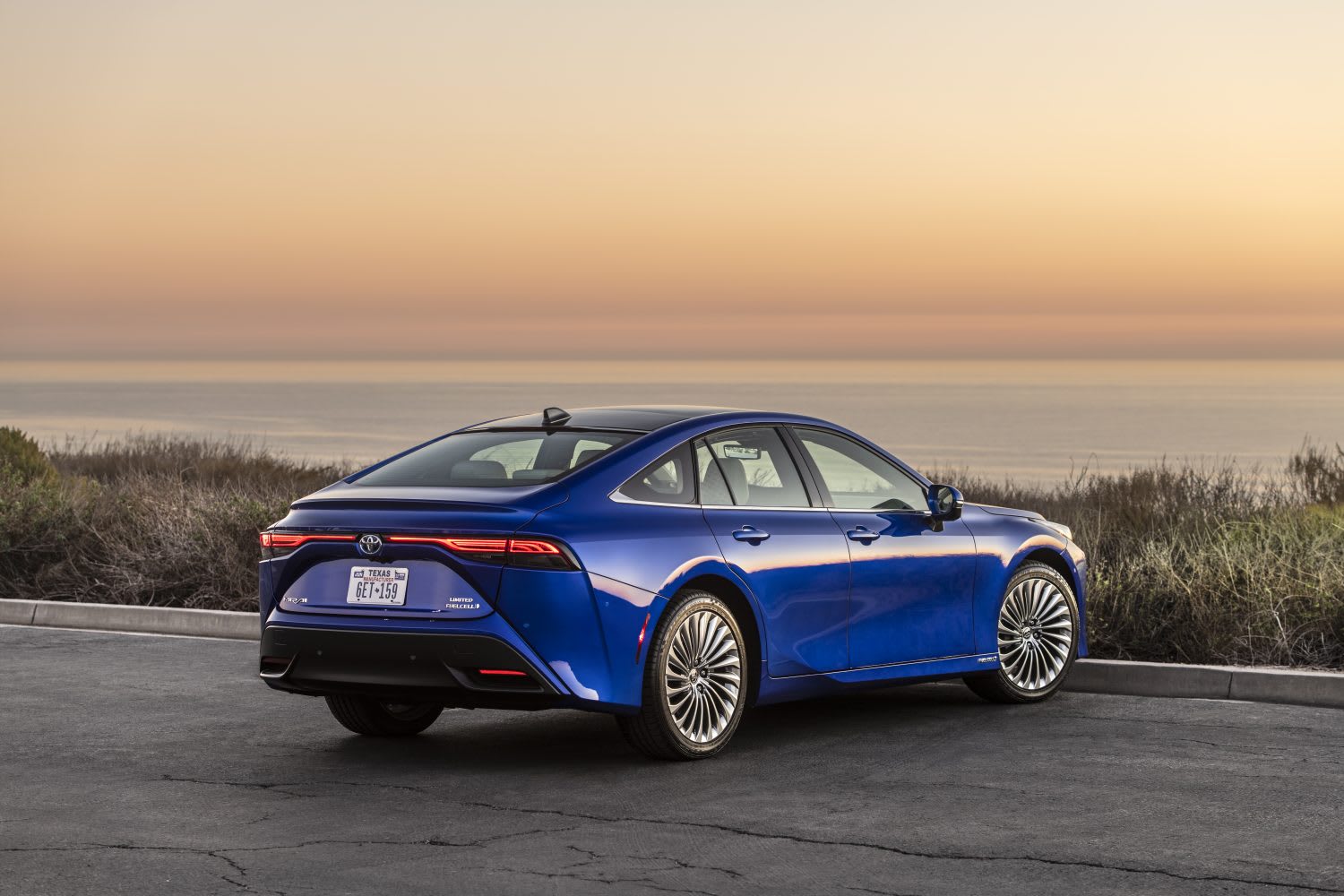
From Soup to Nuts
In 2012, Toyota Chairman Takeshi Uchiyamada threw down the gauntlet when he declared, “The current capabilities of electric vehicles do not meet society’s needs, whether it may be the distance the cars can run, or the costs, or how it takes a long time to charge.” It was a flat out dismissal of battery electric car viability. And in 2012, he was correct. Battery electric cars were expensive, had very limited range, and took too long to charge.
And so within a year of that proclamation, reporters were driving test mules of Toyota’s fuel cell vehicle. Toyota demonstrated that its fuel cell car could reach a full tank in three minutes. Toward the end of 2013, Toyota revealed its FCV sedan at the Tokyo Motor Show.
In 2014, Toyota announced its FCV sedan would be called Mirai, meaning “future” in Japanese. In 2015, the Mirai reached production, with California receiving its first unit in October of that year. In 2016, the Toyota Mirai captured the World Green Car of the Year Award at the New York International Auto Show.
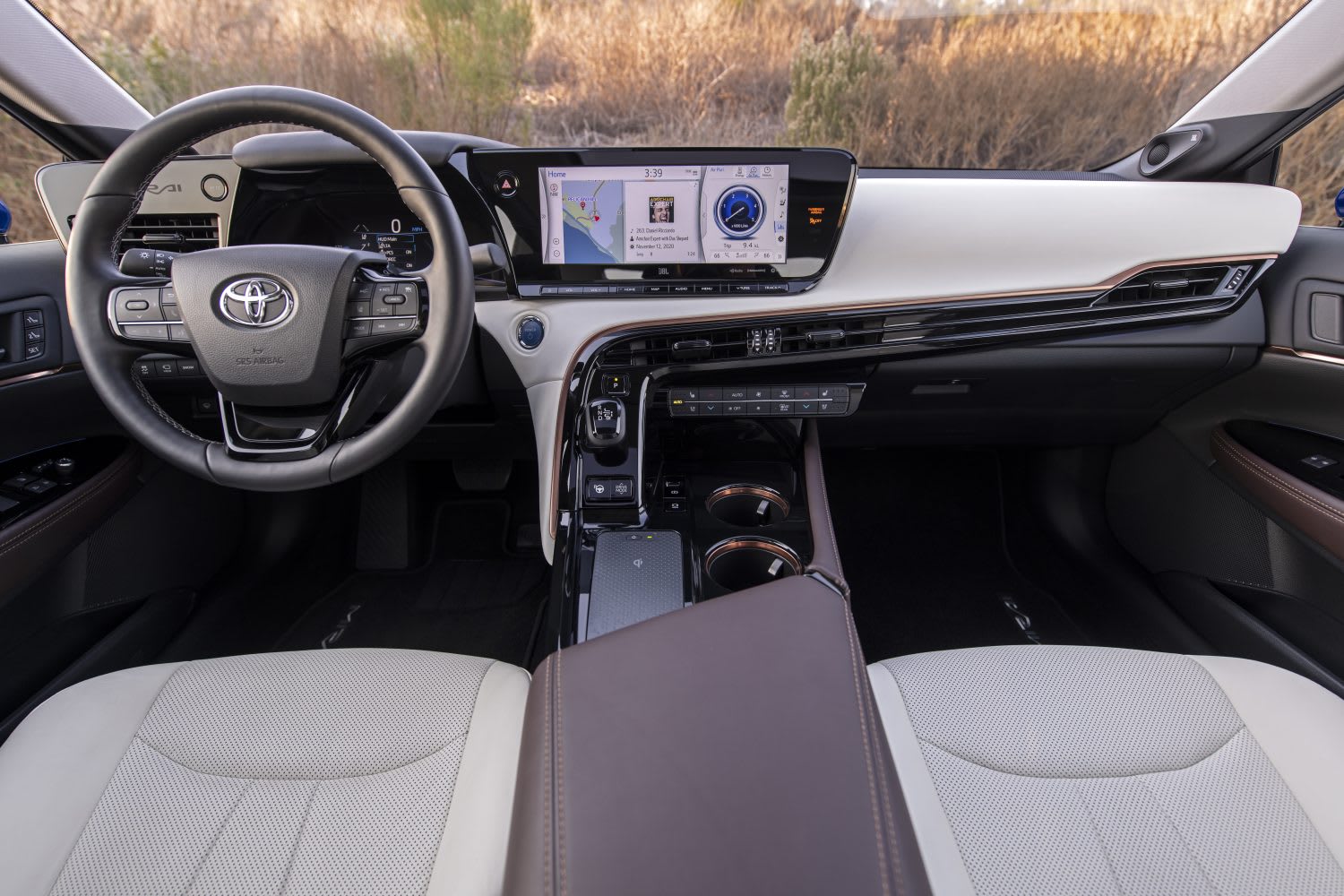
The First-Generation Toyota Mirai
We were impressed with the way the first-generation Mirai drove. It had all the attributes of a good electric car—silent operation, instantaneous torque response, and a smooth, linear acceleration. And that’s because the Mirai IS an electric car, but the current is being drawn from fuel cells instead of from a battery.
The ride quality was also exceptional. Reminiscent of what you would expect from a Lexus. It had the best ride of any Toyota in its time. If the car had any misgiving, it was in its styling. “Over the top” would be a pretty accurate description of how the first-generation Mirai looks. And although we’ve had seven years to get used to it, the profile of that first-generation car is still hard to swallow.
Building The Perfect Mirai
The second-generation Mirai, which is the subject of our review, improves on the original in almost every way. Visually, it’s goes 180 degrees in the opposite direction of the first-generation. The new Mirai is one of the most attractive designs to grace a sedan body from this car company. Inside and out, the look of the new Mirai is sublime.
Toyota not only transformed the appearance of the Mirai, they transformed its soul. Range is up 30 percent, now with the ability to travel 402 miles on a single tank. Instead of the first-gen’s front wheel drive, the second-gen rides on the company’s GA-L platform that is shares with the flagship Lexus LS sedan. As with the larger Lexus, the new Mirai is a rear-wheel drive, four-wheel independent suspension sedan. The new configuration, along with a power boost to the electric motor, allows the Mirai to feel more like a sporty European luxury sedan. Toyota claims the new car has a near 50-50 weight distribution, and will sprint from 25 to 45 mph in 2.8 seconds.
Finally, Toyota dropped the price of the new Mirai to $49,500 (or $50,945 with the destination charge factored in). That’s more than $9,000 below the outgoing model. It’s priced right in Tesla Model 3 Long Range territory. And, we might add, the new Mirai’s range exceeds the Long Range Tesla by a cool 50 miles.
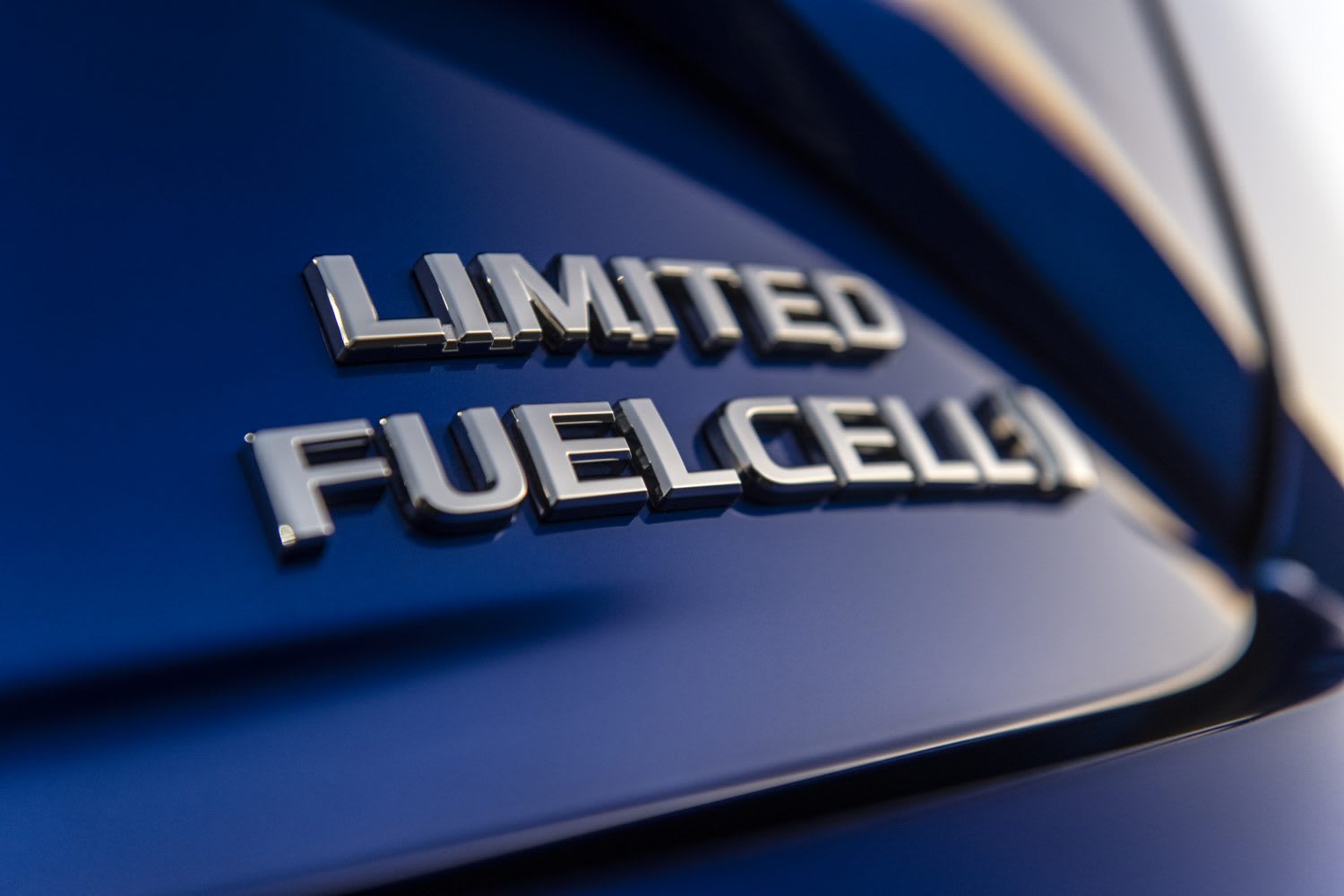
The Mother Of All Perks For The Mirai
Many readers are familiar with the governmental perks bestowed upon electric vehicles (EVs), but the perks go even further for fuel cell electric vehicles (FCEVs). The federal tax credit for FCEVs is $8,000. California (the only state in which the Mirai is currently on sale or lease) provides a $4,500 cash rebate for FCEVs (bumped up to $7,000 if you meet certain household income requirements). And an additional $750 cash rebate is provided by the California Air Resources Board through your local California utility company.
But Wait, There’s More
Remember that perfect party analogy at the beginning of this story? Toyota is well aware of the intervening events that have put a damper (or two) on its fuel cell feast. To counteract the momentum, Toyota is pulling out all the stops for the new Mirai. For starters, each Mirai comes with up to $15,000 of complimentary hydrogen fuel, extended ToyotaCare for three years or 35,000 miles, and complimentary rental service for up to 21 days during the first three years of ownership. Last, but not least, keep an eye out for insane incentives that Toyota has been offering periodically on the Mirai, such as $20-25,000 off the sticker price if you finance the car through the car company. Together with the government incentives, you can buy or lease a new Mirai for an outrageously discounted price.
One of my colleagues decided to take the plunge on a new Mirai Limited, loaded to the gills. Here’s how he put the deal by Toyota:
“The car sticker was $67,000, and with taxes and fees came out to roughly $73,000. Toyota had a promotion to knock off $25,000 from the sticker price, and I had $3,000 in other discounts. That brought it down to $45,000. Then, there’s $15,000 in free hydrogen fuel and $12,500 back from the state and federal governments for hydrogen incentives. That brought the cost of the car down to $17,500, with free car service and zero percent interest financing for 72 months. Crazy!”
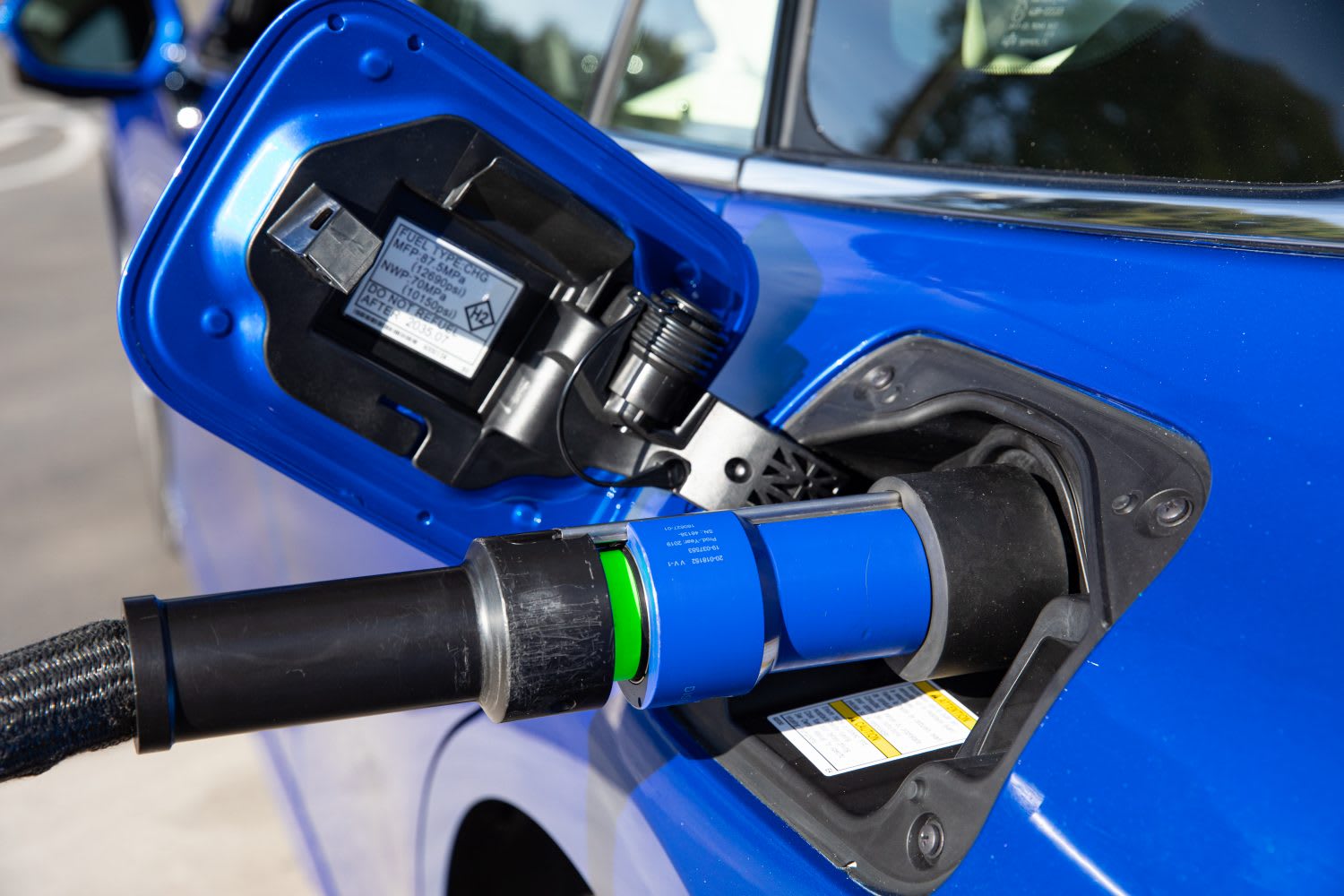
Summary Judgment
After all is said and done, buying or leasing a new Toyota Mirai fuel cell electric vehicle is not such a crazy proposition. From the standpoint of build quality, driving experience, ride quality, and design, it’s the best car you can get in the USA that carries the Toyota brand badge. If there are any faults in getting a Mirai, it lies not in the car but in the hydrogen fuel station infrastructure. You’ll therefore want to read up (Google) the experiences of other fuel cell owners in your geographic area (and see Doug Stokes’ Sidebar Comments below).
Not too long ago, buying a Tesla was considered a bold and daring move. Now, there’s a 10-month waiting list for either their Model 3 or Model Y—and it seems like one out of every 10 cars we see on the road are Teslas. So, if you want to make a sustainability statement today, you can get in line and wait 10 months—or you can walk over to the Mirai party at a participating California Toyota dealer. The new Mirai may be the best-kept automotive secret for our well-informed, enterprising risk-takers.
Toyota Mirai - Specifications That Matter
Name of vehicle: 2022 Toyota Mirai
Price(s): $49,500 (XLE) and $66,000 (Limited), plus destination charges
Propulsion: electric motor, hydrogen fuel cell-charged
Drive configuration & suspension: front-motor, rear-wheel drive, four-wheel independent suspension
Range on a single tank: 402 miles
Dealers that sell or lease the Mirai in the Greater Los Angeles area: Click here for a Google Search
Sidebar Comment By Doug Stokes
Only a handful of Toyota Dealers in Southern California sell the Mirai line of cars (the ones located near hydrogen fuel stations), and even they can stumble when asked about the availability of hydrogen fuel.
A call to the sales department of one prominent dealer about the hydrogen fuel availability question prompted an “erm, there’s a chart you can get on the internet,” with the line going cold before I could say thanks for the info. Other sales department calls ranged from “we don’t sell those” to (in answer to my availability question) “I don’t know.” It was almost as thought they were not aware of this Toyota breakthrough car, or there just wasn’t enough of a commission incentive involved.
Other than that, the stories of long drives to empty filling sites are still rampant. The future is here, but it’s under high pressure (and that’s a fact, Jack). Flex-fuel (AKA E15/E85) is still out there (somewhere) but, once again, the infrastructure is not quite there yet. Time and great ideas always have seem to have some sort of inverse relationship in the automotive world. This one is no exception.
The car itself is clearly head and shoulders past almost anything else in its price range as a conversation-starter. Tesla’s offerings seem commonplace by comparison. Me, I’m waiting for a flux capacitor-powered car.
The Latest Fuel Cell Numbers
Numbers as of December 1, 2021.
| FCEVs—Fuel cell cars sold and leased in US | 12,187 |
| FCEBs—Fuel cell buses in operation in California | 48 |
| Fuel cell buses in development in California | 58 |
| Hydrogen stations available in California | 48 |
| Retail hydrogen stations in construction in California | 10 |
| Retail hydrogen stations in permitting in California | 28 |
| Retail hydrogen stations proposed in California | 17 |
| Retail hydrogen stations funded, but not in development in California | 71 |
| Total retail hydrogen stations in development in California | 127 |
| Retail truck hydrogen stations in construction in California | 4 |
| Retail truck hydrogen stations funded, but not in development in California | 5 |
About The Authors

Roy Nakano gave birth to LACar in the late '90s, having previously delivered LA Audio File back in the '80s. Aside from the occasional review, Roy likes to stray off the beaten automotive path: "Six Degrees of Reparations" reflected on the regretful ethical paths taken by car companies throughout history. "Traveling Through the Past and Present of the Green Book" looked at businesses that took a stand against racism and the man that wrote the book on where to find them. "Best Cars to Drive in Rush Hour Traffic" was an LACar guide published in the pre-GPS era. "In Search of the First Datsun 510 Tuner" looked at one of the milestones in the origin of import tuners. And "Us vs Them" examines the instances when rivalry among automotive enthusiasts crossed the line to violence and even death.
Together with
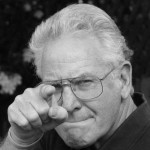
Doug has a long and wide-ranging history in the motoring business. He served five years as the Executive Director of the International Kart Federation, and was the PR guy for the Mickey Thompson's Off-Road Championship Gran Prix. He worked racing PR for both Honda and Suzuki and was a senior PR person on the first Los Angeles (Vintage) Grand Prix. He was also the first PR Manager for Perris Auto Speedway, and spent over 20 years as the VP of Communications at Irwindale Speedway. Stokes is the recipient of the American Autowriters and Broadcaster’s 2005 Chapman Award for Excellence in Public Relations and was honored in 2015 by the Motor Press Guild with their Dean Batchelor Lifetime Achievement Award. 2025 saw Stokes voted into the Go Kart Hall of Fame. “… I’ve also been reviewing automobiles and books for over 20 years, and really enjoy my LACar assignments.” he added.
